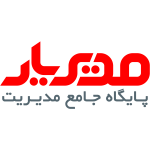مقدمه:
يکي از اصلي ترين دغدغه هاي دائمي مديران، شيوه هماهنگ سازي همه فعاليتهاي سازمان براي وصول به يک برونداد و پيامد مشترک در جهت اثربخشي سازمان است. بنگاههاي پيشتاز و اثربخش، قادرند همزمان با توسعه بازار و محصول، تعداد بيشتري از کارکنان، با تخصص هاي متنوع و طبيعتا با مختصات فکري و شخصيتي متفاوت را به کار گيرند. هر چه ميزان اين تنوع افزايش يابد، به صورت طبيعي هماهنگ سازي اين عناصر نيز پيچيده تر و سخت تر خواهد بود. تمام تکنيک ها و نظريه هايي که با محوريت «مديريت سازمانهاي پيچيده» ارائه مي شوند براي فائق آمدن بر اين امر خطير و سخت بوده است. از سوي ديگر قسمت اعظم تلاشهاي نظريه پردازان و انديشمندان عرصه مديريت و مشاوره پيرامون مباحث تحول و تغيير نيز، براي پاسخگويي به اين پرسش اساسي شکل گرفته اند:چگونه مي توان همزمان با تغيير و تحول فضاي کاري و توسعه محصول و بازار، هماهنگي بين عناصر و ابعاد متنوع و در حال رشد سازمان را تضمين کرد؟
قسمتي از پاسخ به اين پرسش در فضاي وبري و با استفاده از تکنيک هاي بوروکراتيک و ساختاري قابل وصول است. اما مديران به خوبي واقفند که اين ابعاد تنها تامين کننده «هويت جسماني،مکانيکال و عيني» هماهنگي در يک سازمان هستند. اين کالبد و بدنه اگر داراي روح و قلب متناسب و مقتضي نباشد، علاوه بر اينکه کارآمد نخواهد بود، مي تواند سرباري گران و ثقيل بر دوش کارايي و اثربخشي سازمان باشد.
سازمان به عنوان يک سامانه اجتماعي، همچون همه سامانه هاي ديگر مي بايست داراي مشخصه توازن (Equilibrium) باشد. اين توازن مي بايست در هر لحظه، متناسب با سطح توسعه يافتگي سازمان در همان لحظه شکل گيرد، از اين رو توازن مورد نظر ايستا نبوده و سازمان مي بايست داراي يک توازن پويا باشد.
از سوي ديگر، توازن سامانه اجتماعي مي بايست همزمان با حفظ هويت يگانه سازمان در طول زمان حفظ شود. به عبارت ديگر، اگرچه سازمان مي بايست به صورت مداوم تغيير را تجربه کند و تن به «شدن» در طول زمان دهد، ولي همزمان با آن مي بايست يک نفر متولي حفظ هويت سازمان باشد. به عبارت ديگر ماموريت و ارزشهاي پايهاي سازمان همواره مي بايست مورد محافظت باشند، تا سازمان از مسير هويت يکپارچه و منحصر به فرد خود منحرف نشود.
حال سوال اينجا است که آيا واقعا اين مسئوليت خطير متوجه يک نفر در سازمان است؟ حفظ هويت، يکپارچگي، هماهنگي و ايجاد نسبتهاي بر هم افزا، آن هم به صورت پويا آيا يک وظيفه و کارکرد مقطعي و يگانه است و يا امري فراگير و مربوط به همه عناصر و واحدهاي موجود درسازمان؟
اگر اين گونه است، چگونه مي توان از انجام درست اين وظايف در سازمان اطمينان يافت؟ چگونه ميتوان آن را کنترل کرد؟ نظارت چگونه انجام مي گيرد و بر عهده چه کسي است؟
تمامي دغدغه ها و سوالات يادشده، جزو مباحثي هستند که تحت عنوان «فرهنگ سازماني» و «توسعه سازماني» از حدود دهه پنجاه ميلادي در جهان مورد امعان نظر و توجه زياد قرار گرفته است. نظرياتي که انديشمنداني همچون آقاي ادگار شاين و يا ديدگاههايي از نوع ديدگاه استعارههاي سازماني توسط آقاي گرث مرگان، ارائه کرده اند، تلاشهائي هستند که در کنار ديدگاههاي دموکراسي صنعتي و نهضتهاي روابط انساني به منظور پاسخگويي به اين سوالات ريشه اي بوده اند.
نقطه اشتراک تمامي اين نظريات، توجه به اين واقعت انکارناپذير است که بنيانگذاران سازمانها از طريق نمادها، داستانها، اسطوره ها، شعائر، مراسم و… مي توانند يک هويت يکپارچه سازماني ايجاد کنند که در پناه آن، سازمان قادر خواهد بود يک شخصيت يگانه و ممتاز را ارائه کند. در کنار اين کارکرد فرهنگ، کارکرد روان سازي و تسريع در ارتباطات سازماني و کاري از ديگر موارد کارايي فرهنگ سازماني است.
همان طور که ملاحظه مي کنيد شکل دهي به فرهنگ سازماني در حقيقت شکل دهي به يک سرمايه اجتماعي است که در درون سازمان داراي کارکرد هماهنگ ساز و متوازن کننده و در بيرون، تامينکننده و به رخ کشنده مزيت رقابتي و منحصر به فرد سازمان است.
کارکردهاي يادشده تنها زماني محقق مي شوند که بنيانگذاران و رهبران سازمان قادر باشند ارزشها و باورهاي پايه اي را در سازمان همه گير کرده و يا به عبارت ديگر وجود عاطفي و تمايلات قلبي خويش را در وجود همه همکاران تکثير کنند. اين وظيفه خطير، همواره جز اصلي ترين وظايف رهبران سازمانها است. نکته اساسي و قابل توجه اين است که مديران ارشد سازمانها عموما خود را متولي هر سامانه و يا موضوعي در سازمان مي دانند به غير از فرهنگ سازماني. فرهنگ سازماني عموما داراي متولي نيست، چرا که مديران ارشد سازمانها اغلب نسبت به اهميت اين موضوع و نقششان در شکل دهي و مراقبت از آن آگاهي لازم را ندارند. از ديگر سو به علت عدم توجه به اين عنصر و بعد حياتي، درحرفه مشاوره مديريت نيز شاهد توانمندي بالايي در اين زمينه نبوده ايم. نبود تجربه هاي موفق و بارز در زمينه هاي «توسعه سازماني» و همچنين نبود اين تجربه ها در زمينه تيم سازي و شکلدهي به تيم هاي کارآمد، از تجليات بارز اين نقيصه اساسي هستند.
به نظر مي رسد که زمان آن فرارسيده است که مديران ارشد سازمانهاي مختلف، به اصلي ترين نقش خود که همانا رهبري فرهنگ سازماني است واقف شده و همزمان سازمانهايي همچون سازمان مديريت صنعتي که در جبهه نخست حرفه مشاوره حضور دارند نيز خود را براي ارائه خدمات مشاوره در اين حوزه آماده نمايند.
هرکسي را اصطلاحي داده ايم
هرکسي را سيرتي بنهاده ايم
هنديان را اصطلاح هند مدح
سنديان را اصطلاح سندمدح
تو ز سرمستان قلاووزي مجو
جامه چاکان را چه فرمائي رفو؟
«مولانا»
منبع: تدبیر
Organizational Culture
In the past 25 years, the concept of organizational culture has gained wide acceptance as a way to understand human systems. From an “open-sytems” perspective, each aspect of organizational culture can be seen as an important environmental condition affecting the system and its subsystems. The examination of organizational culture is also a valuable analytical tool in its own right.
This way of looking at organizations borrows heavily from anthropology and sociology and uses many of the same terms to define the building blocks of culture. Edgar Schein, one of the most prominent theorists of organizational culture, gave the following very general definition:The culture of a group can now be defined as: A pattern of shared basic assumptions that the group learned as it solved its problems of external adaptation and internal integration, that has worked well enough to be considered valid and therefore, to be taught to new members as the correct way to perceive, think, and feel in relation to those problems. (Schein 373-374)
In other words, as groups evolve over time, they face two basic challenges: integrating individuals into an effective whole, and adapting effectively to the external environment in order to survive. As groups find solutions to these problems over time, they engage in a kind of collective learning that creates the set of shared assumptions and beliefs we call “culture.”
Gareth Morgan describes culture as “an active living phenomenon through which people jointly create and recreate the worlds in which they live.” For Morgan, the three basic questions for cultural analysts are:
- What are the shared frames of reference that make organization possible?
- Where do they come from?
- How are they created, communicated, and sustained? (Morgan 141)
Elements of organizational culture may include:
- Stated and unstated values.
- Overt and implicit expectations for member behavior.
- Customs and rituals.
- Stories and myths about the history of the group.
- Shop talk—typical language used in and about the group.
- Climate—the feelings evoked by the way members interact with each other, with outsiders, and with their environment, including the physical space they occupy.
- Metaphors and symbols—may be unconscious but can be found embodied in other cultural elements.
Morgan proposes four essential strengths of the organizational culture approach:
- It focuses attention on the human side of organizational life, and finds significance and learning in even its most mundane aspects (for example, the setup in an empty meeting room).
- It makes clear the importance of creating appropriate systems of shared meaning to help people work together toward desired outcomes.
- It requires members—especially leaders—to acknowledge the impact of their behavior on the organization’s culture. Morgan proposes that people should ask themselves: “What impact am I having on the social construction of reality in my organization?” “What can I do to have a different and more positive impact?”
- It encourages the view that the perceived relationship between an organization and its environment is also affected by the organization’s basic assumptions. Morgan says:
We choose and operate in environmental domains according to how we construct conceptions of who we are and what we are trying to do. . . . And we act in relation to those domains through the definitions we impose on them. . . . The beliefs and ideas that organizations hold about who they are, what they are trying to do, and what their environment is like have a much greater tendency to realize themselves than is usually believed. (Morgan 149)
According to Edgar Schein, cultural analysis is especially valuable for dealing with aspects of organizations that seem irrational, frustrating, and intractable. He writes, “The bottom line for leaders is that if they do not become conscious of the cultures in which they are embedded, those cultures will manage them.” (Schein 375) It is significant that Schein uses the plural “cultures.” Using open-systems concepts, we know that members of a group culture may also belong to subcultures within an organization. Since organizations do have a shared history, there will normally be at least a few values or assumptions common to the system as a whole. But sometimes, as in many orchestra organizations, the subcultures have had different experiences over time, and their group learning has produced very different sets of basic assumptions.
Organization members interpret the behavior and language of others through their own cultural biases. Each member’s (or subsystem’s) set of beliefs, values, and assumptions becomes their unquestioned “reality”; they then perceive behavior inconsistent with their own biases as irrational, or even malevolent. The organizational culture model suggests reinterpreting such conflict as a product of different sets of experiences. Instead of looking at conflict as “right” versus “wrong,” this approach suggests that subsystems examine the assumptions underlying their behavior, honor the experiences and learning that led to those assumptions, and then investigate whether those assumptions still work well in the present.
This is an exemplary application of “double-loop” learning, a term coined by Chris Argyris of National Training Laboratories in Washington, D.C., and now in general use among organizational theorists. In contrast with “single-loop” learning, or the process of solving problems based on an existing set of assumptions, double-loop learning also involves becoming aware of a group’s underlying assumption set and continually inquiring whether it is still useful for the task at hand.
Because culture is so deeply rooted in an organization’s history and collective experience, working to change it requires a major investment of time and resources. Help from a change agent outside the system is often advisable. Without such help, it is difficult for insiders to view their “reality” as something they’ve constructed, and to see meaning in things they normally take for granted. Next time, we will take a look at ways some organization change practitioners have taken on the challenge of culture change in the corporate world, as well as in the orchestra field. Stay tuned!







